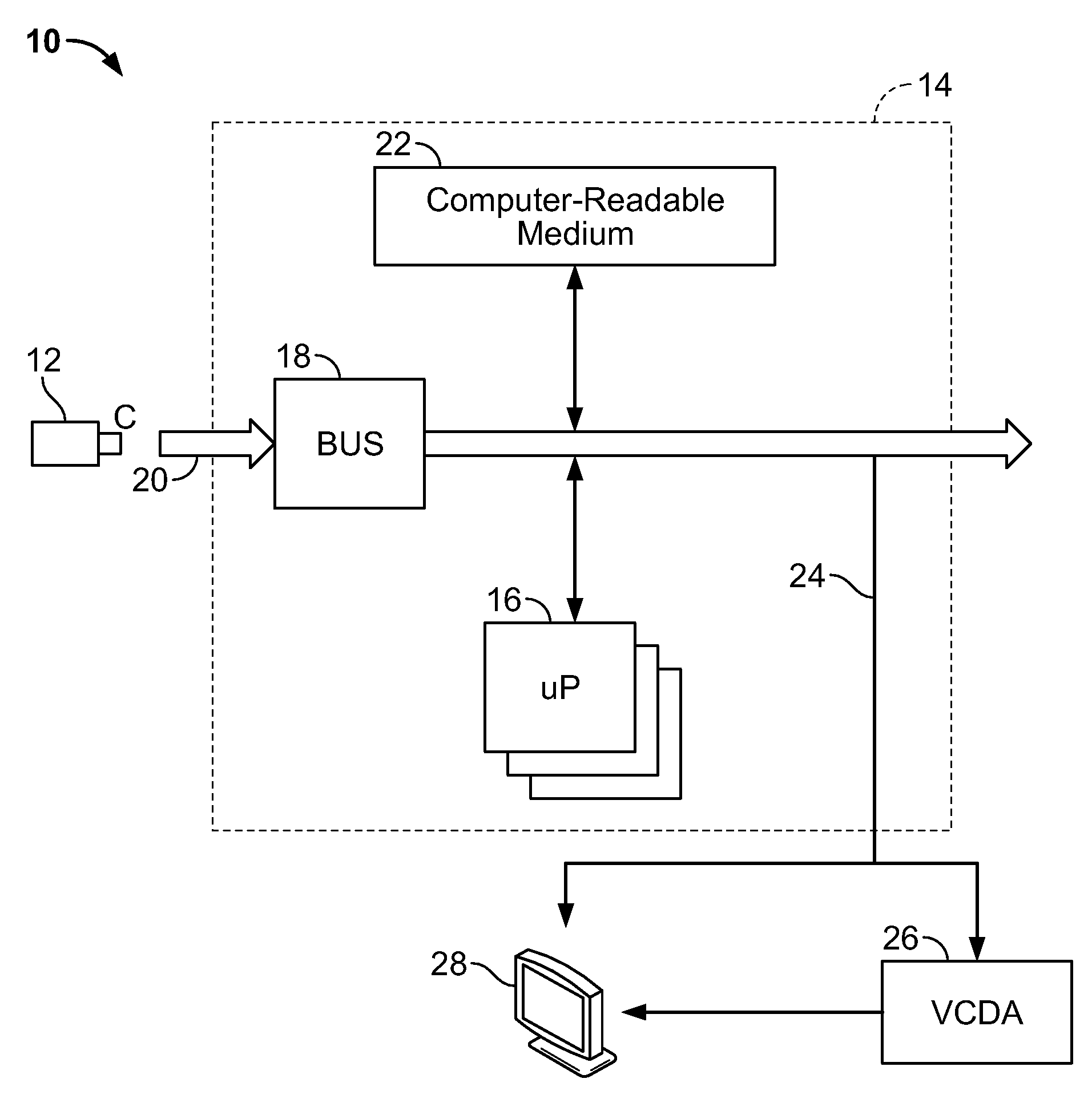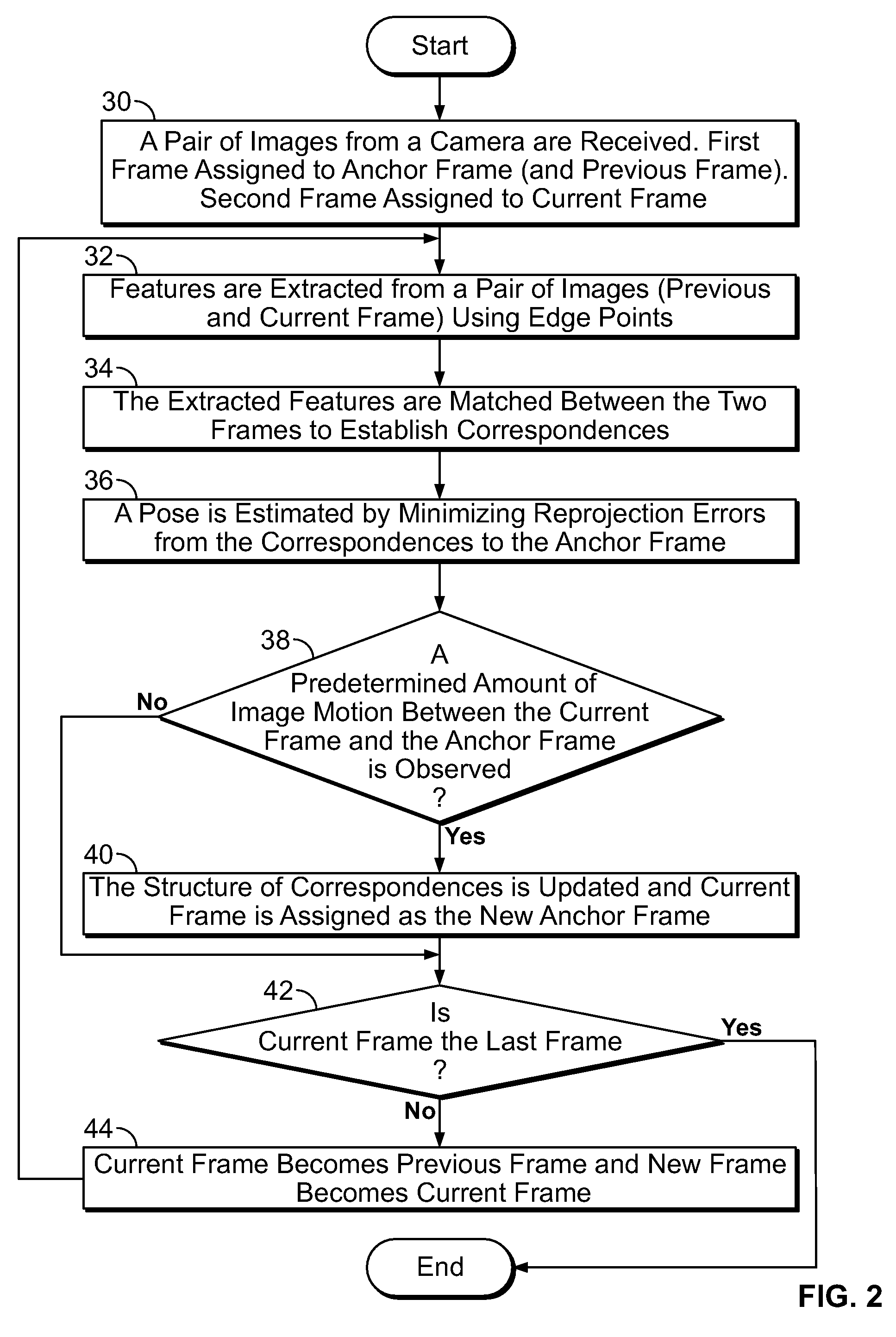Camera egomotion estimation from an infra-red image sequence for night vision
a technology of infra-red image sequence and camera egomotion, applied in the field of vision systems, can solve the problems of low resolution image compared with visual range image data, inability to meet the conditions of infra-red domain easily, and inability to directly apply robust pose estimation methods
- Summary
- Abstract
- Description
- Claims
- Application Information
AI Technical Summary
Problems solved by technology
Method used
Image
Examples
Embodiment Construction
[0019]The present invention describes an egomotion estimation system and method that can work robustly with infra-red image sequences. The method is based on aggregate feature matching that exploits “focus of expansion” constraints from instantaneous vehicle motions. Pose and structure are simultaneously estimated and propagated to obtain camera pose in consecutive frames where features do not register sufficient image motions between frames. The proposed method is designed to specifically handle the difficulties that arise from (1) fragility of feature matching under low-resolution infra-red imaging conditions, (2) noisy pose estimates due to small vehicle motion between image frames and (3) instability of pose estimation under dominant forward motions.
[0020]Referring now to FIG. 1, there is shown an egomotion estimation system 10, constructed according to an embodiment of the present invention. By way of a non-limiting example, the system 10 receives a plurality of infra-red video...
PUM
 Login to View More
Login to View More Abstract
Description
Claims
Application Information
 Login to View More
Login to View More - R&D
- Intellectual Property
- Life Sciences
- Materials
- Tech Scout
- Unparalleled Data Quality
- Higher Quality Content
- 60% Fewer Hallucinations
Browse by: Latest US Patents, China's latest patents, Technical Efficacy Thesaurus, Application Domain, Technology Topic, Popular Technical Reports.
© 2025 PatSnap. All rights reserved.Legal|Privacy policy|Modern Slavery Act Transparency Statement|Sitemap|About US| Contact US: help@patsnap.com



